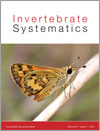Prevention of DNA degradation is essential to conducting molecular analyses of field-captured specimens. This is especially important for projects that incorporate participation of non-specialists in research, such as agency monitoring of pests, or citizen science, where standard methods of preservation may be inaccessible. We examined efficacy of three common alternative products as a substitute for 95% ethanol or pure propylene glycol in preserving DNA: alcohol-based hand sanitiser and propylene and ethylene glycol-based automobile antifreeze. We subjected Xylosandrus compactus ambrosia beetles (Coleoptera : Curculionidae : Scolytinae) to each preservative for two or seven days under direct outdoor exposure and assessed relative quantity of intact DNA by performing real-time polymerase chain reaction amplification of a single-copy nuclear marker. Amplification was observed in all treatments and electrophoresis of the amplified product showed clear bands of the appropriate weight. Successful amplification of the target gene was verified by sequencing the amplified control. No statistically significant differences were found between the cycle threshold values of any treatment. Our results suggest that alcohol-based hand sanitiser and automobile antifreeze can successfully preserve DNA for short-term storage and serve as effective substitutes for laboratory-grade preservatives in citizen science projects, large-scale trapping projects or by professionals.
How to translate text using browser tools
30 October 2015
Alternative preservatives of insect DNA for citizen science and other low-cost applications
Sedonia Steininger,
Caroline Storer,
Jiri Hulcr,
Andrea Lucky
ACCESS THE FULL ARTICLE

Invertebrate Systematics
Vol. 29 • No. 5
October 2015
Vol. 29 • No. 5
October 2015
biodiversity
Coleoptera
Genetics




